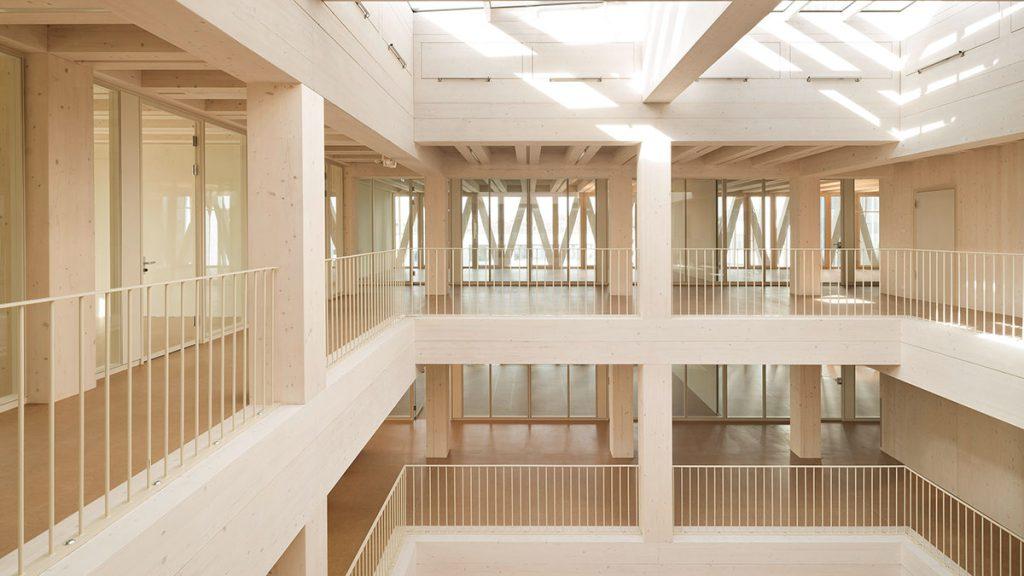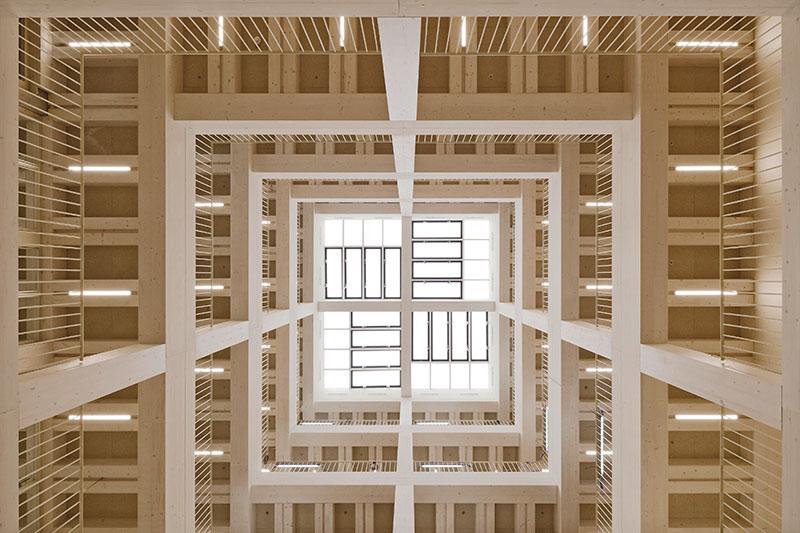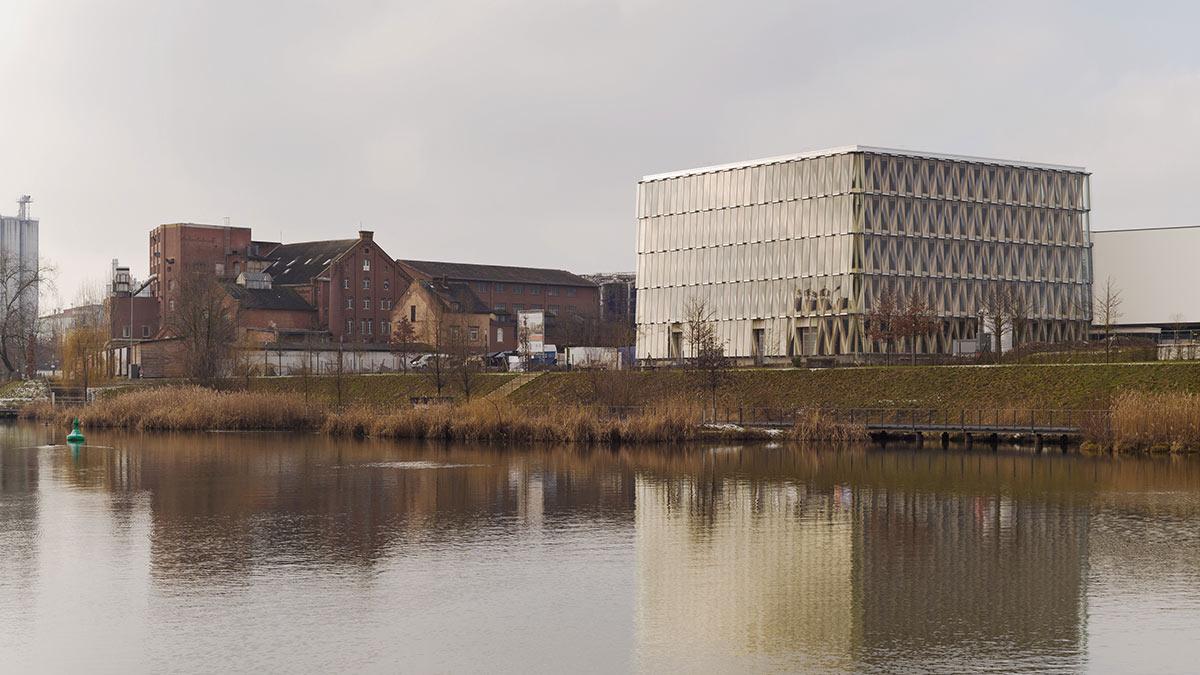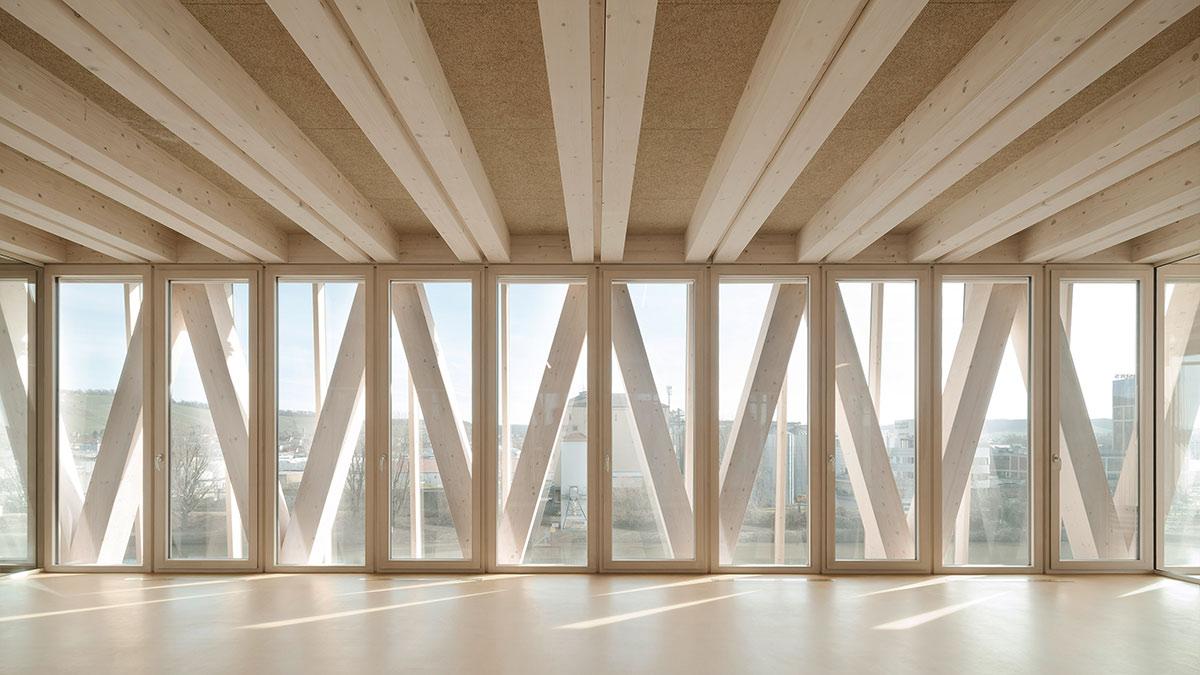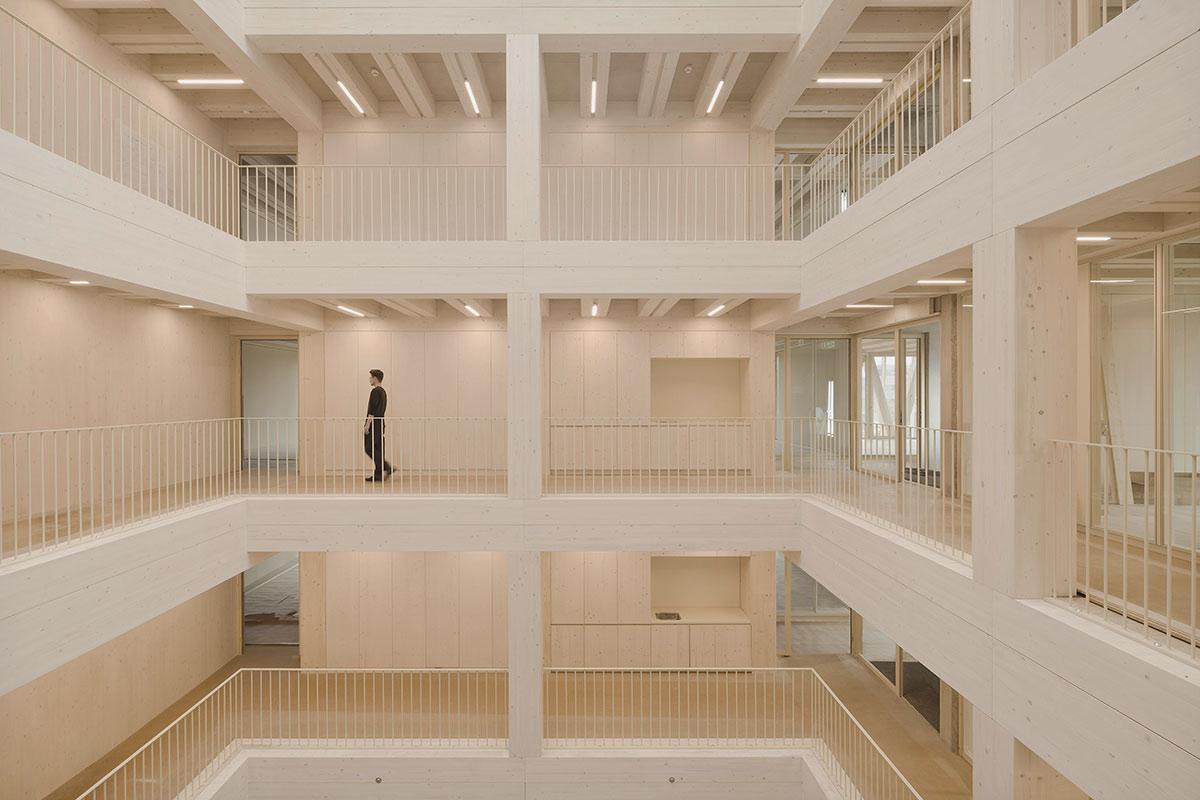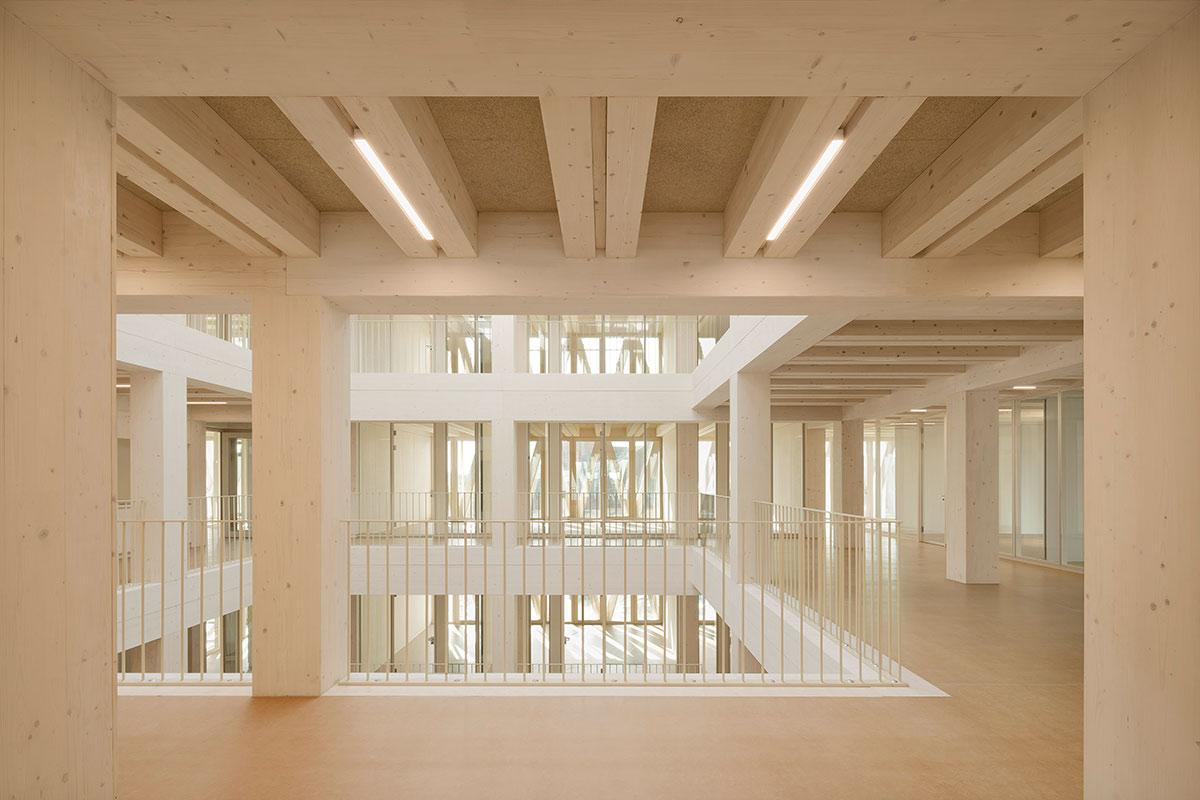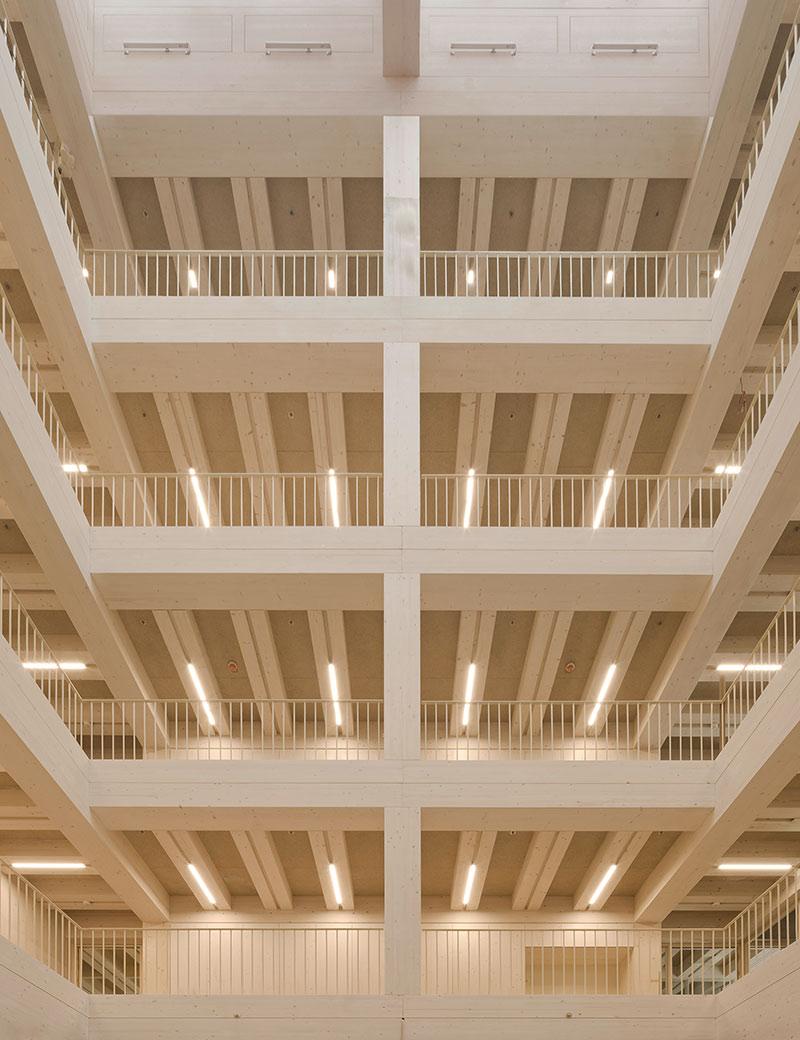A temple for start-ups
The German city of Heilbronn is home to a remarkable timber structure. Innovation Factory 2.0 displays a new kind of aesthetics, both on the inside and outside. This sophisticated paradise for innovation displays precision craftsmanship from Switzerland.
Heilbronn is a city that is on the upswing. In celebration of the Federal Garden Show back in 2019, an urban exhibition covering an area of around three hectares presented architectural highlights such as the residential building Skaio. At a height of 34 metres, this was Germany’s tallest construction with a modern timber design for a number of years until it was ultimately topped by Hamburg’s Roots. The exhibition grounds were further developed after the show ended, to create the new city neighbourhood Neckarbogen as an aspiring model of future urban development.
Timber innovation centre
Close to this neighbourhood, the Wohlgelegen Future Park is situated upstream and spans around 12 hectares, with the central tower housing the Science and Technology Centre (WTZ) as a landmark visible from miles around. The development also includes the Innovation Park Artificial Intelligence (IPAI), which is due to move to its own premises further north and serve as Germany’s belated answer to Silicon Valley. As the latest highlight to join the Wohlgelegen Future Park, Innovation Factory 2.0 was completed in early 2024.
An office building by real estate developer Implenia, it was constructed specifically to enable start-ups to “plug & play”. With a laptop under their arm and pursuing an exciting business idea, young entrepreneurs are able to rent fully furnished coworking spaces and offices with favourable conditions. In total, 280 workspaces have been created on five storeys with a gross floor area of almost 6,000 square metres.
A remarkable wooden construction
Innovation Factory 2.0 is an extraordinary timber structure designed by Waechter + Waechter Architekten, who recently won a “best architects 25” award for the project. It contrasts with the design of nearby residential Skaio in that the timber of this office construction is clearly visible from outside. The facade supports are reminiscent of half-timbered buildings and immediately catch the eye through the entirely transparent exterior shell. External glazing serves to protect these wooden supports from the weather, while the interior windows in this three-layer facade provide the thermal envelope.
Both inside and outside, the down-to-earth and calm simplicity defines the look and feel.
Felix Waechter, architect
Inside the building as well, the horizontal zigzag of the glulam beams lends the workspaces their unmistakable character. In the central atrium, the structure with supports and beams is conspicuous and becomes the most important element of the design due to its minimalist quality.
The walls, floors and staircases maintain a consistent tone and create a cream-coloured, homogeneous setting. There are no distractions; everything radiates calm and tastefulness. “Both inside and outside, the down-to-earth and calm simplicity defines the look and feel,” Felix Waechter remarked to german-architects.com.
This start-up temple has an almost otherworldly atmosphere, which aims to facilitate its multi-faceted intellectual world while stimulating as much interaction as possible. “Bright, light-flooded communication and meeting zones around a central hall invite the inventors, founders and creative workers of the start-ups to exchange ideas and find inspiration,” the project description reads. “The hall forms the centre and allows for easy orientation.”
Precision craftsmanship from Switzerland
The structure displays precision craftsmanship by timber construction experts Blumer Lehmann from Swiss canton Appenzell Ausserrhoden. It is based on a skeleton design, with timber-concrete composite slabs.
Bright, light-flooded communication and meeting zones around a central hall invite the inventors, founders and creative workers of the start-ups to exchange ideas and find inspiration.
Waechter + Waechter Architekten
Together with the timber supports on the facade, these deliver the reinforcement and horizontal stability of the building. “This allows us to do without bracing walls along the facade and inside the building, and at the same time provide maximum flexibility,” the architects explain.
CLT elevator shafts
In timber engineering, reinforced concrete is mostly used for the service cores and building stiffening. But in Innovation Factory 2.0 even the stairways and elevator shafts are built with CLT. Taking a similar approach to pioneering timber building Sara Kulturhus in northern Sweden, reinforced concrete was only used for the floor slab and basement.
In total, around 1,500 m³ timber were used in construction, which corresponds to about 500 trees. Around 1,500 tonnes of CO2 are therefore stored in the wood. This means that the start-up temple in Heilbronn is not just a paradise for new ways of working, it is also a carbon sink that contributes to reducing greenhouse gas emissions.
Text: Gertraud Gerst
Translation: Rosemary Bridger-Lippe
Photos: Brigida González
